Electric Bikes in 2025: Is AI the Game-Changer or Just a Buzzword?
![]() 10/13 2025
10/13 2025
![]() 453
453
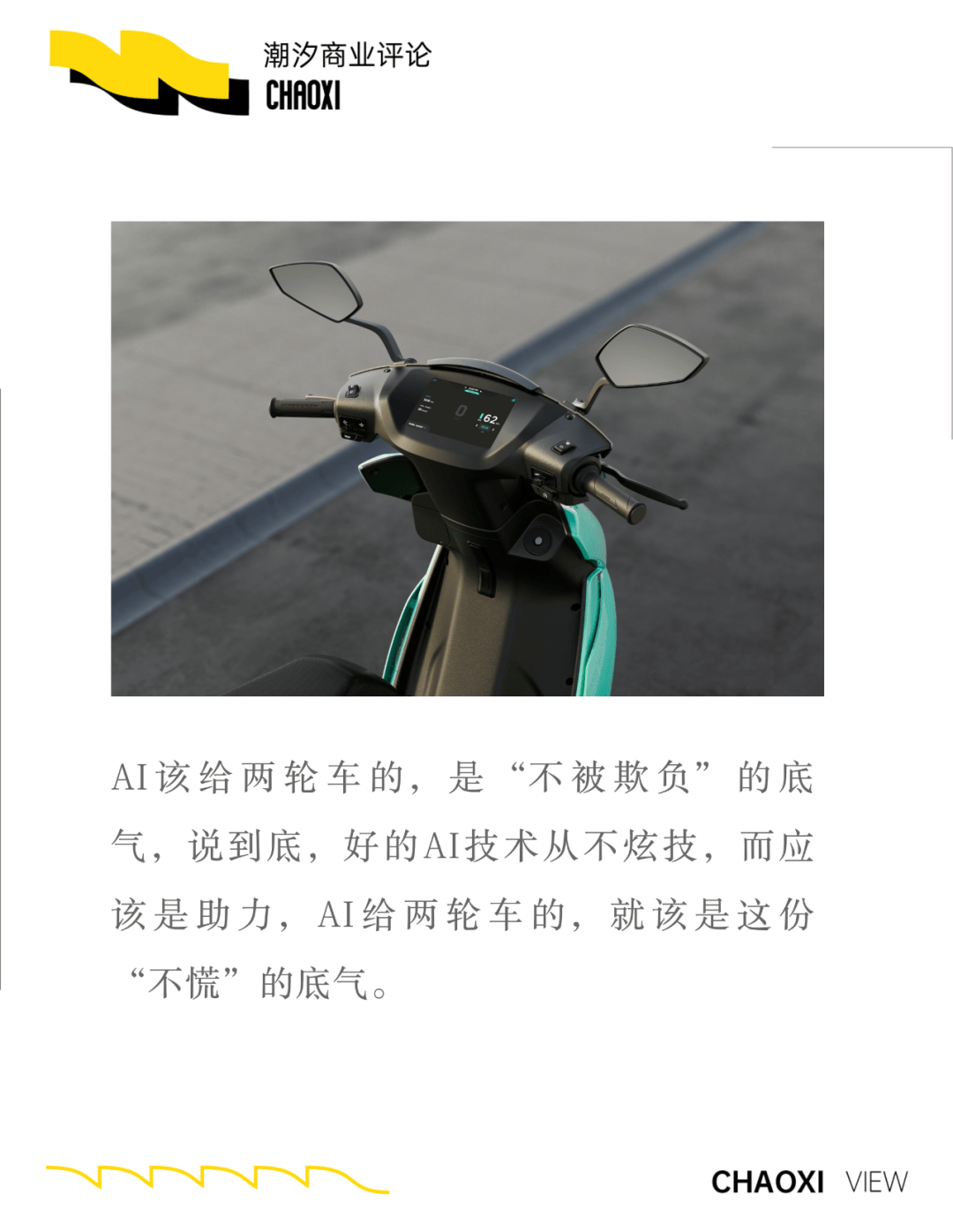
[Tide Business Review/Text]
"By integrating AI technology with cutting-edge material science, our goal is to make electric bikes lighter, reduce range anxiety, and bring advanced intelligent manufacturing into the daily lives of the public," stated Yang Xiao, President of Shouqu Technology, a company specializing in intelligent short-distance transportation. His candid expression of the company's ambitions for two-wheeled electric vehicles highlights the true essence of AI-powered two-wheeled electric bikes: the seamless blend of intelligent technology with traditional vehicle design.
Several companies are striving to infuse ordinary two-wheeled electric vehicles with intelligent capabilities, with brands like Ninebot, Ai Ma, and Ya Di making strategic moves.
With the advancement of general artificial intelligence technology, by 2025, the AI trend has finally reached the realm of two-wheeled electric vehicles. From intelligent unlocking, automatic locking upon departure, automatic owner recognition, and vehicle-battery identification to prevent theft, the convergence of AI and two-wheeled electric vehicles has made cycling both engaging and practical.
For example, on a busy street, a rider unlocks his new electric bike, purchased for 4,000 yuan, by simply touching his phone to it. As the bike automatically starts, the dashboard displays real-time traffic alerts. This everyday scenario, reshaped by AI technology, underscores the convenience of intelligent two-wheeled electric vehicles. "It looks decent. Now, when delivering food, the mid-route time and traffic alerts are much more convenient than traditional electric bikes, though it seems to consume more power, and many features are unnecessary for me," the rider commented.

Meanwhile, at Ninebot's experience store in Zhongguancun, Beijing, engineers are fine-tuning a new product equipped with the "True Intelligence 3.0" system, which enables automatic obstacle recognition within 20 meters using three AI chips.
These seemingly disparate scenes represent an upgrade in the mobility technology sector. As AI technology transitions from laboratories to the streets, two-wheeled electric vehicles are evolving from the "functional machine era" to the "intelligent machine era."
From an industry development perspective, the shift of two-wheeled electric vehicles from electric to AI-powered is not merely about technological advancement but about precisely addressing the pain points of everyday life.
However, will consumers truly embrace this "revolution"?
01 AI Wave Sweeps Through Two-Wheeled Electric Vehicles
Just as Tesla redefined automobiles with Autopilot, the two-wheeled electric vehicle industry is undergoing a similar intelligent transformation. According to Aowei Cloud Network data, domestic sales of electric two-wheeled vehicles increased by 29.5% year-on-year in the first half of 2025, with significant growth in intelligent two-wheeled electric vehicle brands.
Among the leading brands, Ninebot ranked first in sales growth for two-wheeled vehicles. Financial reports indicate that Ninebot's intelligent two-wheeled electric vehicle sales in China reached 2.39 million units in the first half of the year, a year-on-year increase of 99.5%.
Features such as intelligent unlocking, automatic following, and health monitoring are transitioning from high-end configurations to standard offerings.
Objectively speaking, the driving force behind this transformation is the synergy between technological maturity and user needs, or more simply put, the widespread integration of artificial intelligence technology into every aspect of two-wheeled electric vehicles.
As technology becomes more accessible, AI is transforming from a "luxury" to a "daily necessity." Taking Ninebot as an example, its "True Intelligence 3.0" system, released in 2025, leverages the self-developed Ninebot OS operating system to bring AI features previously found only in high-end models, such as 2K dashcams and forward collision warnings, to models priced between 2,000 and 4,000 yuan.
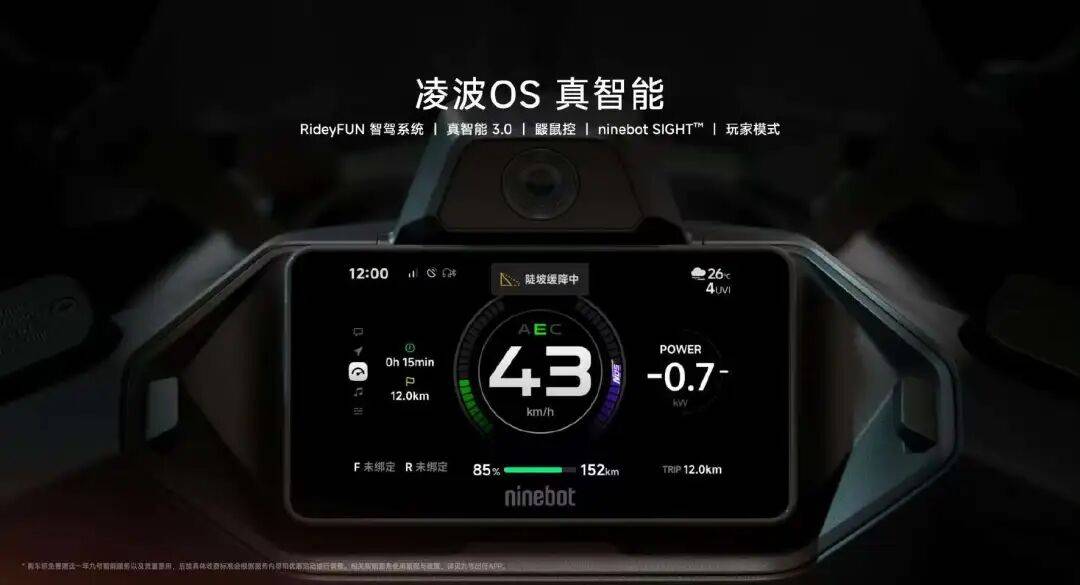
Furthermore, its self-developed "Ridey GO" intelligent vehicle system, "Ridey LONG" extended range system, and "Ridey FUN" intelligent driving system collectively provide users with a safer and more intelligent riding experience.
Frankly, behind this "technological inclusivity" lies a significant reduction in computing costs. The application of Qualcomm Snapdragon 8-series chips in two-wheeled vehicles has increased AI computing power by five times per device while only increasing costs by 12%.
Meanwhile, the intelligent battery swap system developed by CATL in collaboration with HelloBike uses blockchain technology for full lifecycle battery management, reducing swap times from 5 minutes to 30 seconds and significantly alleviating range anxiety for two-wheeled electric vehicle enthusiasts.
However, from a competitive standpoint, the intensifying competition among enterprises in the AI-two-wheeled electric vehicle integration trend is evident. A notable trend is that players in this sector seem to be shifting from "hardware manufacturing" to "ecosystem construction."
Traditional giants are not sitting idle either. Ya Di maintains its top position with a 26.3% market share, achieving revenue of 19.186 billion yuan in the first half of 2025. Leveraging its long-standing expertise in the field and deep collaborations with tech companies like Huawei and Gaode, Ya Di has developed an intelligent central control system supporting voice interaction, OTA upgrades, and anti-theft tracking, enabling real-time vehicle status monitoring, riding data analysis, and fault warnings.
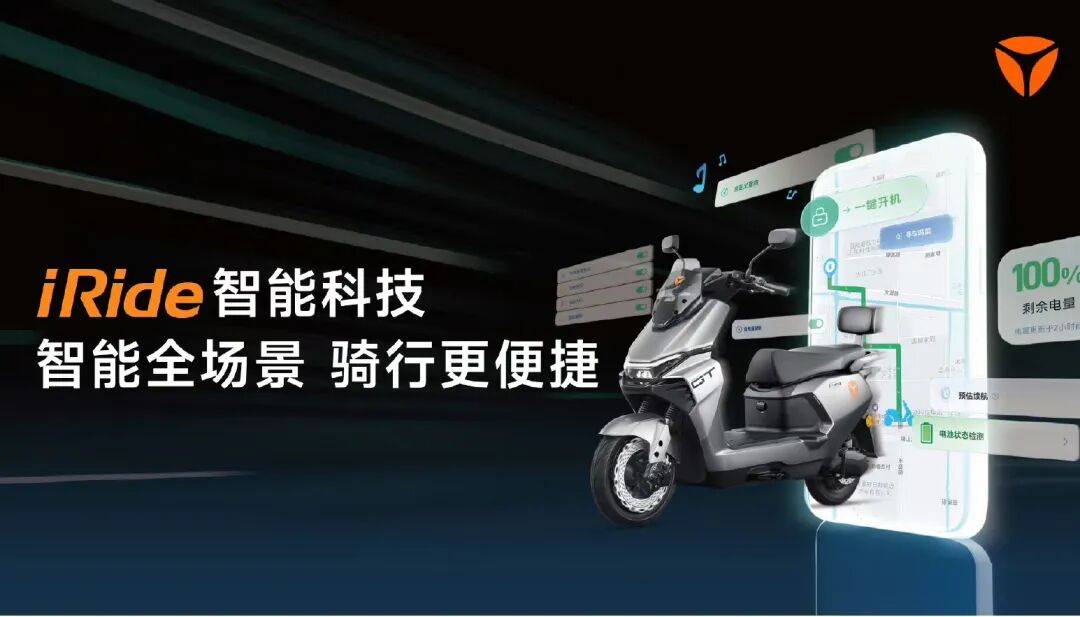
Additionally, the implementation of new national standards in 2025, which mandate intelligent anti-theft features, has directly driven the penetration rate of Beidou positioning modules from 18% in 2024 to 65%.
02 What Has AI Changed?
To clarify the practical value of these official and professional AI feature descriptions, let's illustrate with real-life scenarios.
Under an office building, Lisa remotely checks her vehicle's location via the Ninebot app, avoiding the hassle of searching for her bike after it has been moved by property management.
At a senior activity center, 68-year-old Mr. Wang unlocks his electric bike using fingerprint recognition, with a large-font interface under "Senior Mode" facilitating easy operation.
Delving deeper, while the industry is busy equipping two-wheeled vehicles with "AI brains," the real transformation lies in addressing users' daily complaints. For instance, commuters struggling to find their moved vehicles, elderly individuals unable to remember complex operations, food delivery riders constantly worried about insufficient range, and parents fearing their children's reckless riding...
These scenarios reveal a fundamental truth: The value of AI lies not in showcasing more features but in solving these "survival-level pain points."
Taking safety, a top priority for most users, as a more detailed example, AI two-wheeled electric vehicles are evolving from "passive defense" to "proactive risk avoidance."
Considering that the safety logic of two-wheeled vehicles differs significantly from that of cars, in open environments, 80% of accidents stem from sudden situations like pedestrians suddenly crossing or uneven road surfaces.
For instance, a "AI Collision Avoidance System" from a smart two-wheeled vehicle brand offers a solution: By using a front-facing camera to identify obstacles within 20 meters, it automatically reduces speed and vibrates the handlebars to alert the rider, shortening emergency braking distances by 30% in real-world tests.
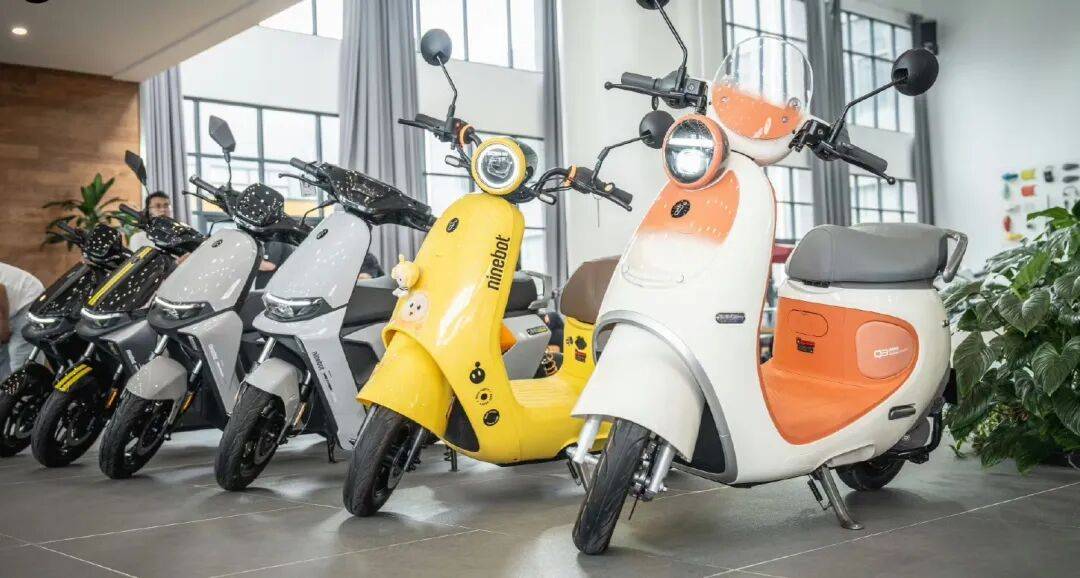
This "proactive risk avoidance" technology has led to a 42% year-on-year decrease in accident rates for models equipped with this system in Q2 2025, far exceeding the industry average.
Even for the elderly population, there is a sense of equality. Aowei Cloud data shows that elderly users account for 23% of the two-wheeled vehicle market, yet traditional smart vehicles are as complex to operate as smartphones.
Some two-wheeled electric vehicle brands have developed "Senior Mode" specifically for this demographic, enabling functions like unlocking and navigation through voice commands while limiting the maximum speed to 20 km/h to avoid speeding risks.
In other words, it is foreseeable that more and more septuagenarians will be seen riding intelligent electric bikes on the streets. Clearly, technology is no longer a barrier but a key to granting them mobility freedom in their later years.
03 Who Will Still Pay When AI Hype Fades?
While the development of AI two-wheeled electric vehicles appears to be thriving, with new technologies making products unparalleled, this does not mean they are free from the hype and pseudo-demands seen in smart home appliances.
At an electric vehicle exhibition in Hangzhou, a brand's "voice joke-telling" feature attracted considerable attention, but concurrent market research showed that only 12% of users were willing to pay for such features.
Do not underestimate the disparity between this "technological frenzy" and "user indifference," as it fundamentally reveals the industry's underlying dilemmas.
On one hand, the industry must guard against functional overload obscuring genuine needs. According to Deloitte data, 62.1% of consumer demand in the two-wheeled electric vehicle industry in 2024 comes from replacement needs. Furthermore, according to Tide Business Review, students and wage earners account for approximately 60% of two-wheeled vehicle consumption, with most budgets concentrated between 2,000 and 3,000 yuan. However, models with "full-scene AI" typically command a premium of 500-800 yuan, with 70% of the new features being gimmicks like "automatic following" and "gesture control."
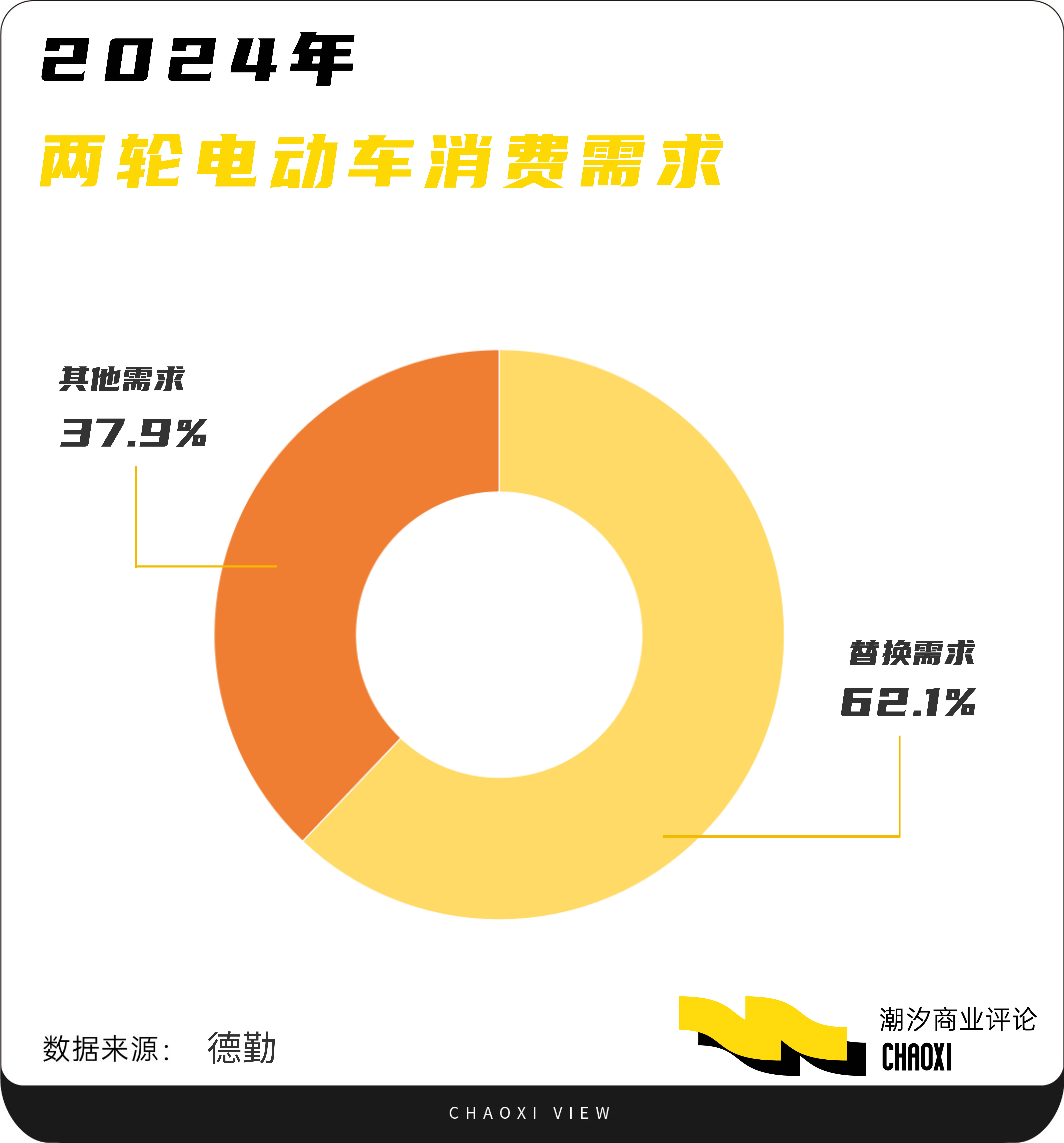
It is also worth noting that some manufacturers, in pursuit of impressive parameters, have implanted AI algorithms into battery management systems to filter abnormal temperature data, increasing the actual risk of battery overheating by 30%. This "data fabrication" is eroding user trust.
At the enterprise level, the fear remains of cutthroat competition. In 2025, market regulatory inspections revealed that 30% of models with AI features posed battery overheating risks, 15% higher than traditional models. A food delivery rider's complaint encapsulates the industry's predicament: "I'd rather have a less intelligent bike than one that catches fire halfway. No matter how advanced the AI is, can it compensate for my late delivery fees to customers?"
In reality, the root cause of this malformed competition lies in enterprises overly emphasizing "the number of AI features" as marketing selling points while neglecting the refinement of underlying technologies. For instance, a brand claims "200-meter remote control" but only achieves 50 meters in practice, and the feature completely fails under electromagnetic interference.
Therefore, what AI should provide for two-wheeled vehicles is the "confidence to not be taken advantage of." Ultimately, good AI technology does not flaunt its capabilities but serves as an enabler.
Looking back, the intelligent revolution of two-wheeled electric vehicles is essentially a revolution about "dignity": When food delivery riders no longer worry about battery theft, when the elderly no longer abandon travel due to technological complexity, and when ordinary wage earners can obtain absolute and reliable safety guarantees with a budget of 2,000-3,000 yuan, AI technology will have completed its transformation from a "luxury" to a "necessity."
"My commute to work takes only ten minutes by bike, so the battery doesn't need to be too large, but it must be durable and safe. Oh, and it would be great if it had some anti-theft features. As for other features, I don't really care about them yet," said Jason from the Tide editorial team.
Allowing AI to transcend hype and achieve a crucial leap from "usable" to "user-friendly" in the value deep waters of safety, convenience, and experience may be the key to winning over consumers.
You see, business is just like that.








